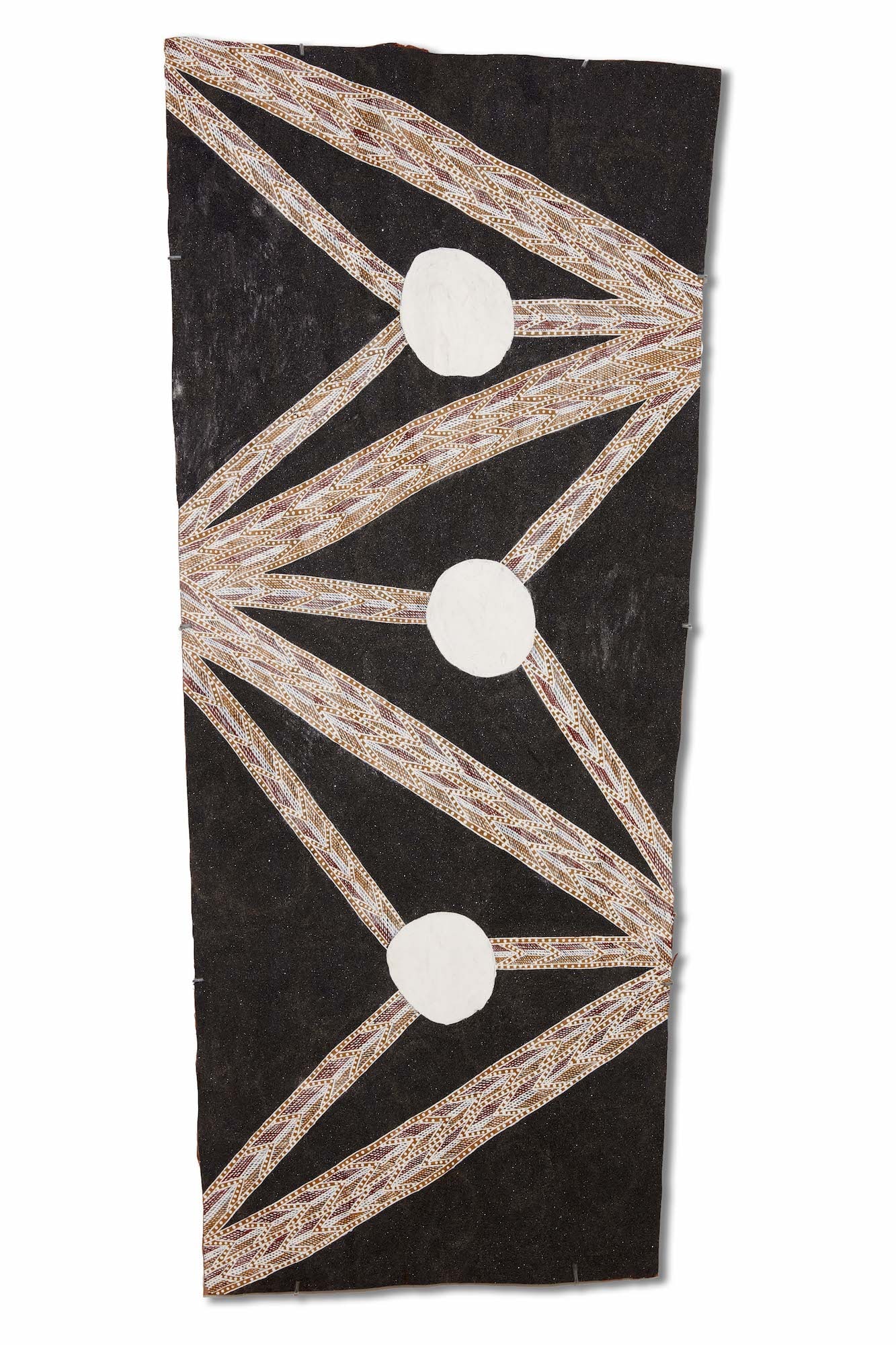
Exhibition Essay
A recently rediscovered fragment of film from 1935 shows Dhambit’s father Mithili as a young man dancing. He is part of a group of Yolŋu who had encountered anthropologist/film maker Donald Thomson on his mission to avoid a mooted government ‘punitive expedition’ to ‘teach the blacks a lesson’ after a policeman had been speared in what was known in English as the Caledon Bay crisis.
Thomson returned to Arnhem land in 1941 as Japanese invasion appeared imminent and recruited 50 Yolŋu men including Dhambit’s father Mithili to the Northern Territory Special Reconnaissance Unit.
Their base was at Bayapula on the shores of Caledon Bay. Caledon Bay was named by Matthew Flinders on 3 February 1803 where he described the people he met there as ‘Australians’ which was one of the first recorded uses of the word to describe the Indigenous people of the continent.
In March 2014 a young girl Yambirrwuy Burarrwaŋa found a Bakelite button with the raised relief of a crown and a Wedge Tailed eagle below the tideline at Bayapula which is near her home of Garrthalala. This was the insignia of the Royal Australian Air Force during World War II.
Also immediately adjacent to Bayapula is the beach known as Yalanba. It is here and only here that the glittering metallic black sand which Dhambit incorporates in her paintings comes from.
Surrounded by Gumatj and Djapu clan lands Yalanba is a small pocket of Marrakulu clan country. This is Dhambit’s own identity and that of her fathers and siblings. One of her brothers is named Yalanba from the songs of this place.
Mithili died in 1981. As an artist himself from the golden era of Yolŋu art in the 1950s and 60s it is not surprising that his daughters Boliny and Ralwurrandji were skilled and imaginative artists. It was Ralwurrandji who pioneered using sand to cover bark on this scale. She used orange sand from her elder sister’s grave side until she herself died too young.
It was these two who tutored their younger siblings. Wukun won the Best Bark Painting Prize at the 1998 National Aboriginal and Torres Strait Islander Art Award with his first ever painting. This work had been made in support of the struggle to protect sacred sea areas embodied in the Saltwater Collection. Ten years later the High Court of Australia recognised exclusive ownership of the sea to the low tide mark adjacent to all Aboriginal land. Wukun was painting at the behest of his clan and under instruction from aged djuŋgayi (cultural managers from the opposite moiety) who had been holding the sacred designs of specific oceanic estates ready for such a use once an appropriate Marrakulu clan artist was ready to assume that knowledge.
One of the areas released by the caretakers was the place known as Guḏultja. The design for this place encoded the dance between waters of two different clans connected through kinship as mother’s mother and daughter’s daughter. Known as märi/gutharra this connection is symbolically understood as the backbone. The hand sign for this relationship is to tap the top of one’s spine. It is the supporting skeleton of all relationships through the endless infinite line of women’s bodies.
This design released to the outside world for the first time in Wukun’s painting in 1998 is the theme of Dhambit’s exhibition which marries that design with the magical sparkling sand from her brother’s namesake beach.
A family affair. Honouring her own connection through her mother’s mother to the Djapu clan whose oceanic waters known as Balamumu meet her own honey imbued Marrakulu water flowing out from Gurka’wuy (Trial Bay). The play and clash and flow of this connection create the songs and the patterns of this place which are manifest in her work. Which is timeless yet dynamic like the water and the history of this place and her family.
Will Stubbs, Buku Larrnggay Mulka Centre coordinator, June 2020




